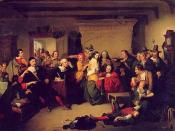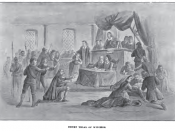After reading "India's Witch Hunts", assume that you are advising an international group that wants to understand this violation of human rights. Explain what witchcraft is and compare and contrast it with other cases we've discussed and studied in class:
Witchcraft is often defined by the social context it comes from. In the case of the situation in India, witchcraft is a negative social stigma or accusation. According to Shweder's model of causal ontologies, interpersonal causal ontology defines the way witchcraft is being used in India. This ontology is "notable for its references to sorcery, evil eye, black magic, spirit attack, poisoning, and bewitchment. It is associated with the idea that one can be made sick by the envy or ill-will of colleagues, neighbors, or associates who want you to die, suffer, or fail. Therapy focuses on talismans or other protective devices, strategies for aggressive counter-attack and, quite crucially, on the repair of social relationships."
In the case of a tragic event in parts of India, such as the death of the daughter from the article, family members will consult a badwa (witch doctor or shaman) to see what might have been the cause. In most cases, as the article shows, the badwa accuses another relative that is female of being a dakan (witch). The accusation does not discriminate by age or family role, so fathers can turn against daughters and husbands against wives. Women are often directly accused of using evil eyes against people. Once accused, many may flee from their homes, but many are "thrashed, harassed, abandoned, made to pay a heavy fine, or even killed."
However, contradictory to the idea of real witch craft is the suspicion that many women are accused for reasons having to do with greed, revenge, or land...


